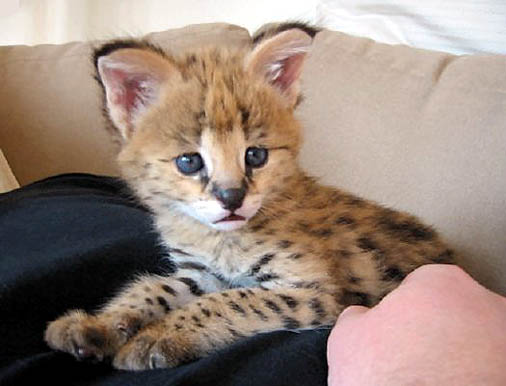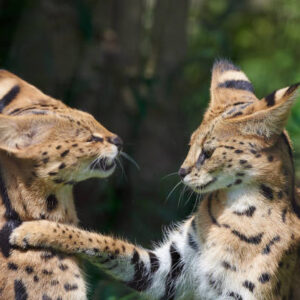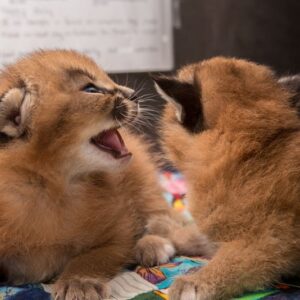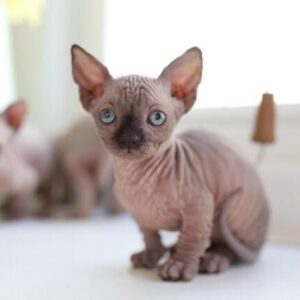Shop
Buy Ocelot Kittens For Sale
$2,800.00
Buy Ocelot Kittens For Sale. The ocelot (Leopardus pardalis) is a medium-sized spotted wild cat that reaches 40–50 cm (15.7–19.7 in) at the shoulders and weighs between 7 and 15.5 kg (15.4 and 34.2 lb) on average.
Buy Ocelot Kittens For Sale
Buy Ocelot Kittens For Sale. The ocelot (Leopardus pardalis) is a medium-sized spotted wild cat that reaches 40–50 cm (15.7–19.7 in) at the shoulders and weighs between 7 and 15.5 kg (15.4 and 34.2 lb) on average. It is native to the southwestern United States, Mexico, Central and South America, and the Caribbean islands of Trinidad and Margarita. Carl Linnaeus scientifically described it in 1758. Two subspecies are recognized.
The ocelot is efficient at climbing, leaping and swimming. It prefers areas close to water sources with dense vegetation cover and high prey availability. Buy Ocelot Kitten For Sale It preys on small terrestrial mammals, such as armadillos, opossums, and lagomorphs. It is typically active during twilight and at night and tends to be solitary and territorial. Both sexes become sexually mature at around two years of age and can breed throughout the year; peak mating season varies geographically.
After a gestation period of two to three months, the female gives birth to a litter of one to three kittens. They stay with their mother for up to two years, after which they leave to establish their own home ranges.
The ocelot is listed as Least Concern on the IUCN Red List and is threatened by habitat destruction, hunting, and traffic accidents. While its range is very large, various populations are decreasing in many parts of its range. Buy Ocelot Kittens For Sale The association of the ocelot with humans dates back to the Aztec and Incan civilizations; it has occasionally been kept as a pet. Buy Ocelot Kittens For Sale near me
Etymology
The name “ocelot” comes from the Nahuatl word ōcēlōtl (pronounced [oːˈseːloːt͡ɬ]), which generally refers to the jaguar, rather than the ocelot. Another possible origin for the name is the Latin ocellatus (“having little eyes” or “marked with eye-like spots”), in reference to the cat’s spotted coat.
Buy Ocelot Kittens Online | Adopt Ocelot Kittens
Other vernacular names for the ocelot include cunaguaro (Venezuela), gato onza (Argentina), gato tigre (Panama), heitigrikati (Suriname), jaguatirica, maracaja (Brazil), manigordo (Costa Rica, Panama and Venezuela), mathuntori, ocelote, onsa, pumillo, tiger cat (Belize), tigrecillo (Bolivia) and tigrillo (Colombia, Ecuador, Guatemala, and Peru).
Felis pardalis was the scientific name proposed for the ocelot by Carl Linnaeus in 1758. The genus Leopardus was proposed by John Edward Gray in 1842 for several spotted cat skins in the collection of the Natural History Museum, London.
Subspecies
In 1919, Allen reviewed the specimens described until 1914, placed them into the genus Leopardus and recognized nine subspecies as valid taxa based on the colors and spot patterns of skins.[10] In 1941, Pocock reviewed dozens of ocelot skins in the collection of the Natural History Museum and regrouped them to nine different subspecies, also based on their colors and spots. Later authors recognized 10 subspecies as valid.
In 1998, results of a mtDNA control region analysis of ocelot samples indicated that four major ocelot groups exist, one each in Central America, northwestern South America, northeastern South America and southern South America south of the Amazon River. A 2010 study of morphological features noted significant differences in the size and color of the Central and South American populations, suggesting they could be separate species.
In 2013, a study of craniometric variation and microsatellite diversity in ocelots throughout the range recognized three subspecies: L. p. albescens from the Texas–Mexico border, L. p. pardis from Central America and L. p. pseudopardalis from South America, though L. p. mitis may comprise the ocelot population in the southern part of South America. Buy Ocelot Kittens Online, Buy Ocelot Kittens For Sale near me.







Reviews
There are no reviews yet.